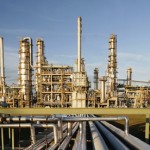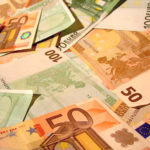Gold traded in a narrow range on Wednesday as investors weighed the possibility for an interest rate increase as an outcome of the Federal Reserve’s two-day policy meeting. Silver fell as well, while copper gained.
Comex gold for delivery in February slid 0.39% to $1 286.7 per troy ounce by 12:34 GMT, shifting in a daily range of $1 293.3 – $1 285.6. The precious metal rose 0.96% on Tuesday to $1 291.7, but not before it touched $1 272.0, the lowest since January 19.
Later on Wednesday the Federal Open Market Committee is due to release a statement with its decision on whether to initiate the first interest rate hike in almost ten years. The world’s largest economy has been improving through the past year and the outlook remains positive for 2015 as well, despite global growth concerns.
This is the central banks first policy meeting after the Swiss National Bank decided on January 15th to scrap a three-year policy of keeping the franc capped against the euro, which was followed by a decision by the ECB to inject 1.1 trillion euros in the Eurozones economy to fight deflation.
An eventual rate hike will most likely dull demand for non-interest-bearing assets, including gold. However, inflation in the country is still below Feds target of 2%, pressured by plunging oil prices, which may trigger a more cautious approach.
The US dollar index for settlement in March was up 0.05% at 94.300 at 12:34 GMT, holding in a daily range of 94.605-94.195. The US currency gauge fell 0.91% on Tuesday to 94.250. A stronger greenback makes dollar-denominated commodities more expensive for holders of foreign currencies and curbs their appeal as an alternative investment, and vice versa.
“I think it’ll be mostly a non-event. The Fed will probably stick to the status quo and if that proves to be true then gold should continue to hover between $1,270 and $1,290 in the near term,” said Howie Lee, investment analyst at Phillip Futures, cited by CNBC. Mr. Lee added that policy makers would most likely increase interest rates by June.
Gold is up around 9% so far this month as global growth concerns and the launch of a quantitative easing program by the European Central Bank have pushed gold traders to seek the safety of the metal.
Additionally, the yellow metal was boosted by instability in European markets, caused by worries that Greece may exit the 19-member zone.
However, the precious metals outlook remains grim. According to a survey by Reuters, gold prices are expected to fall during 2015. Major banks, including Barclays, UBS Goldman Sachs and Societe Generale, are also projecting lower prices.
Despite the disappointing forecasts, Mr. Lee does not expect prices to drop bellow $1 250 in the short term as China, the biggest gold consumer in the world, supports physical markets ahead of its Lunar New Year.
Assets in the SPDR Gold Trust, the biggest bullion-backed ETF, climbed 9.26 tons on Tuesday to 752.70 tons. Changes in holdings typically move gold prices in the same direction.
Copper
Copper rose on Wednesday after the biggest drop in nearly two weeks as investors eyed the FOMC policy decision, with hopes circling that officials wont announce a rate hike. Continuous signs of economic slowdown in top consumer China, however, capped gains.
Comex copper for delivery in March traded 0.41% higher at $2.4725 per pound at 12:34 GMT, having ranged between $2.4940 and $2.4520 during the day. The contract fell 3.17% on Tuesday to $2.4625.
The industrial metal drifted away from Mondays 5-1/2-year low as the dollar softened following a surprise drop in US durable goods orders in December. Albeit supporting copper from the dollar side, the data also implied a worse demand outlook.
On the positive side however, consumer confidence surged in January, while sales of newly-built homes jumped in December by 11.6% to an annualized pace of 481 000, the highest since June 2008.
The industrial metal has fallen 13% in January, heading for the worst month since September 2011, as a slowing Chinese economy, coupled with downward revisions for global growth by the World Bank and the IMF fanned demand concerns.
Data by the National Bureau of Statistics showed yesterday that industrial profits in China grew last year by 3.3%, the slowest growth in records dating back to 2000. The gauge slid for a third month in December, dropping by 8%.
The data came after the statistics agency reported last week that the Chinese economy expanded by an annualized 7.3% in the fourth quarter, pushing full-year growth down to 7.4% in 2014, the lowest since 1990 and below the government’s targeted 7.5%. Meanwhile, preliminary private data had shown that Chinas manufacturing sector contracted for a second consecutive month in January.





